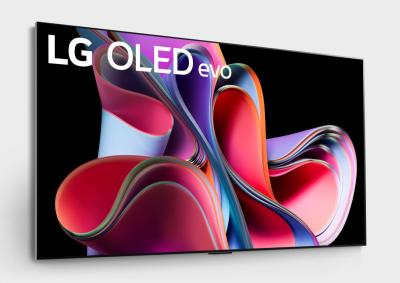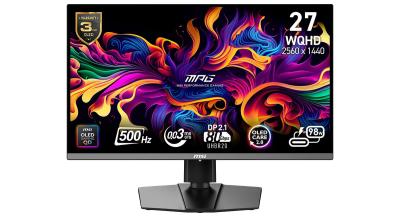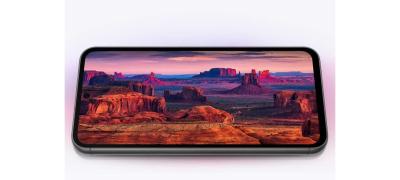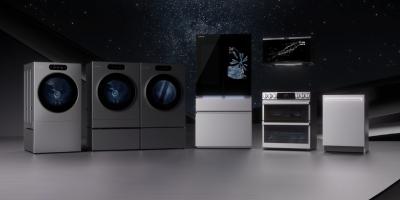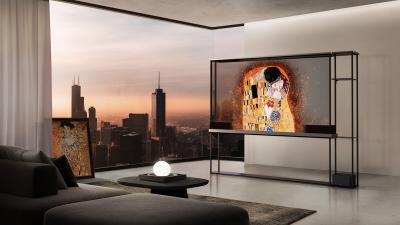 LG Display, based in Korea, is one of the world's largest display makers. LGD produces screens for TVs, laptops and mobile devices, focusing on OLED technologies.
LG Display, based in Korea, is one of the world's largest display makers. LGD produces screens for TVs, laptops and mobile devices, focusing on OLED technologies.
LG Display is the world's leading OLED TV and monitor panel producer (based on its WOLED architecture). The company also produces flexible AMOLEDs for wearables, tablets and smartphones (branded as pOLEDs, and supplied to many companies including Apple). LG Display is also offering automotive OLED displays, transparent OLEDs, and is developing OLED microdisplays.
LG Display supplies WOLED TV panels in a wide range of sizes, from 42-inch to 97-inch, to many companies including Panasonic, LG Electronics, Sony, Philips, Loewe, JVC, Hisense, Konka and others. It is a main AMOLED supplier for Apple's smartwatch, mobile phones and tablet products. It is also considered to be the leading automotive OLED producer.
LG Display has been producing transparent OLEDs since 2019, when the company started commercial production of 55" FHD transparent OLEDs, finding small markets in signage, commercial, mobility and more. The company since expanded its range, although production volume is still limited.
Towards the end of 2015 LG Display acquired LG Chem's OLED lighting business unit for $135 million, but it later withdrew from the lighting market.
128, Yeoui-daero
Yeongdeungpo-gu
Seoul
South Korea
LG: the OLED monitor market will surpass $1 billion in 2025
LG says that the OLED monitor market will surpass $1 billion in revenues in 2025, up from $793 million in 2024. In 2022, the total OLED monitor market amounted to only $75 million. LG says that about 22% of all gaming monitors sold today are based on OLED panels.
LG Display says that Korean OLED makers (i.e. LGD itself and Samsung Display) dominate the market - with about 99.8% market share.
LG Display starts producing 45" 5K2K WOLED gaming monitor panels
LG Display announced that it has started mass producing its latest WOLED panel, a 45" 1300 nits 21:9 5K2K panel, aimed towards high-end gaming monitors. The panel offers LGD's Dynamic Frequency & Resolution (DFR) technology that enables a choice between two modes, 5K2K 165Hz or FHD 330Hz.
Towards the end of 2024, LG Electronics unveiled the first monitor to use this new panel, in its UltraGear GX9 monitor series.
Hyundai Mobis aims to commercially launch a 18-inch rollable automotive display by 2028
According to reports from Korea, Hyundai Mobis has plans to launch a 18-inch rollable automotive display, ans has seemingly already signed up both General Motors, Hyundai Motors and Kia to adopt this display into four models, that will launch in 2028.
Hyundai Mobis hasn't yet selected the supplier of its rollable display, and it is talking to both Samsung Display and LG display. Both companies haven't yet commercialized automotive-grade rollable displays, and the development contract will have to be signed within a few months if the companies hope to have a commercial launch in 2028.
Reports suggest quality issues at BOE may shift iPhone OLED orders to Samsung Display and LG Display
Sources in Korea suggest that BOE struggles with supplying AMOLED panels to Apple's iPhone, and Apple may switch some of its orders to LG Display and Samsung Display.
BOE is supplying LTPS AMOLED displays to Apple's iPhone 14, 15 and 16 devices, but the company faces quality issues and Apple has rejected many of its displays. It is estimated that it will take at least 6 weeks for BOE to fix the OLED quality problems, and meanwhile since the beginning of 2024 it managed to ship only about 7-8 million panels to Apple - from orders of around 40 million units.
LG Display's latest WOLED panels reach 4000 nits, the company details the META 3.0 technology behind it
Last week LG Electronics officially launched its 2025 OLED TV range, where some of the high-end models reaching 4,000 nits. LG Display today unveiled the technology behind these new OLED displays.
LGD's so-called META 3 WOLED panels (which are the company's 4th-gen WOLEDs) achieve 33% higher brightness to each a maximum of 4,000 nits. The new panels adopt a new stack structure that has two layers of blue emitters and two more layers, one with red emitters and one with green emitters. LGD refers to this architecture as a "Primary RGB Tandem structure".
LG Electronics unveiled its 2025 OLED TV range
LG Electronics officially launched its 2025 OLED TV range, with 4 different series. The higher-end G5 and M5 models adopt a new WOLED panel design that increases the number of stacks to 4 (previous models used 3 stacks) which increases brightness and efficiency. Interestingly, none of these TVs use a microLens array (MLA).
So LG's OLED M5 is the company's flagship wireless 4K 144Hz OLED for 2025. The M5 will be offered in 65", 77", 83" and 97" sizes. The OLED G5 is the second top-of-the-line TV, with 4K 165Hz panels (144Hz on the 48-inch and 97-inch models), offered in a wide range of sizes (48", 55", 65", 77", 83" and 97").
LG Display to retrofit its iPad AMOLED line to produce iPhone OLEDs as Apple reduces its tablet display orders
In late 2024 we reported several times that demand for Apple's iPad Pro devices is lower than expected, and the company reduced its OLED panel orders from both Samsung and LG.
According to a new report from Korea, LG may decide to start using its IT AMOLED production line to produce smartphone displays. The company looks to supply 70 million iPhone AMOLED displays to Apple in 2025, up from around 65 million in 2024 (and 52 million in 2023). Converting the IT AMOLED line to smartphone panel production will enable LGD to increase capacity without a large investment in new equipment.
LG Electronics launches a refrigerator with a transparent OLED display
LG Electronics announced a new refrigerator, the Smart InstaView French Door Refrigerator, that has a 36" transparent OLED display embedded in the upper right door.
The OLED displays services both as a digital touch interface, and a "Dual InstaView" which means that users can view the contents of the refrigerator without opening the door. The display can also show "mesmerizing hologram-like visuals, blending the virtual with the real in a sublime fusion of art and high technology".
LG starts offering its transparent Signature OLED T TV with a $60,000 price tag
LG announced that it is starting to ship its transparent wireless Signature OLED T TV with a $59,999 price tag. The TV can be ordered from LG directly or from Best Buy.
LG's Signature OLED T is a 77" 4K wireless transparent OLED TV that can change from a transparent mode to a black-background mode (via a raised black contrast film) in which it operates just like a normal OLED TV. The OLED T is powered by LG's Alpha 11 AI processor, and uses LG's Zero Connect box which makes it almost completely wireless (except the power).
LG Display deploys a new AI system to improve its OLED manufacturing process
LG Display announced that it has developed and deployed a new AI system that will improve its OLED production process. The system collects and analyzes OLED process manufacturing data in real-time. When the system finds anomalies in the OLED manufacturing process, it can alert in real time, and even find solutions.
LG Display says that since the introduction of this new AI system, its ability to analyze process data has been enhanced, significantly improving both manufacturing speed and accuracy. The time required to analyze and improve the causes of quality anomalies has been reduced from an average of three weeks to two days.
Pagination
- Page 1
- Next page
